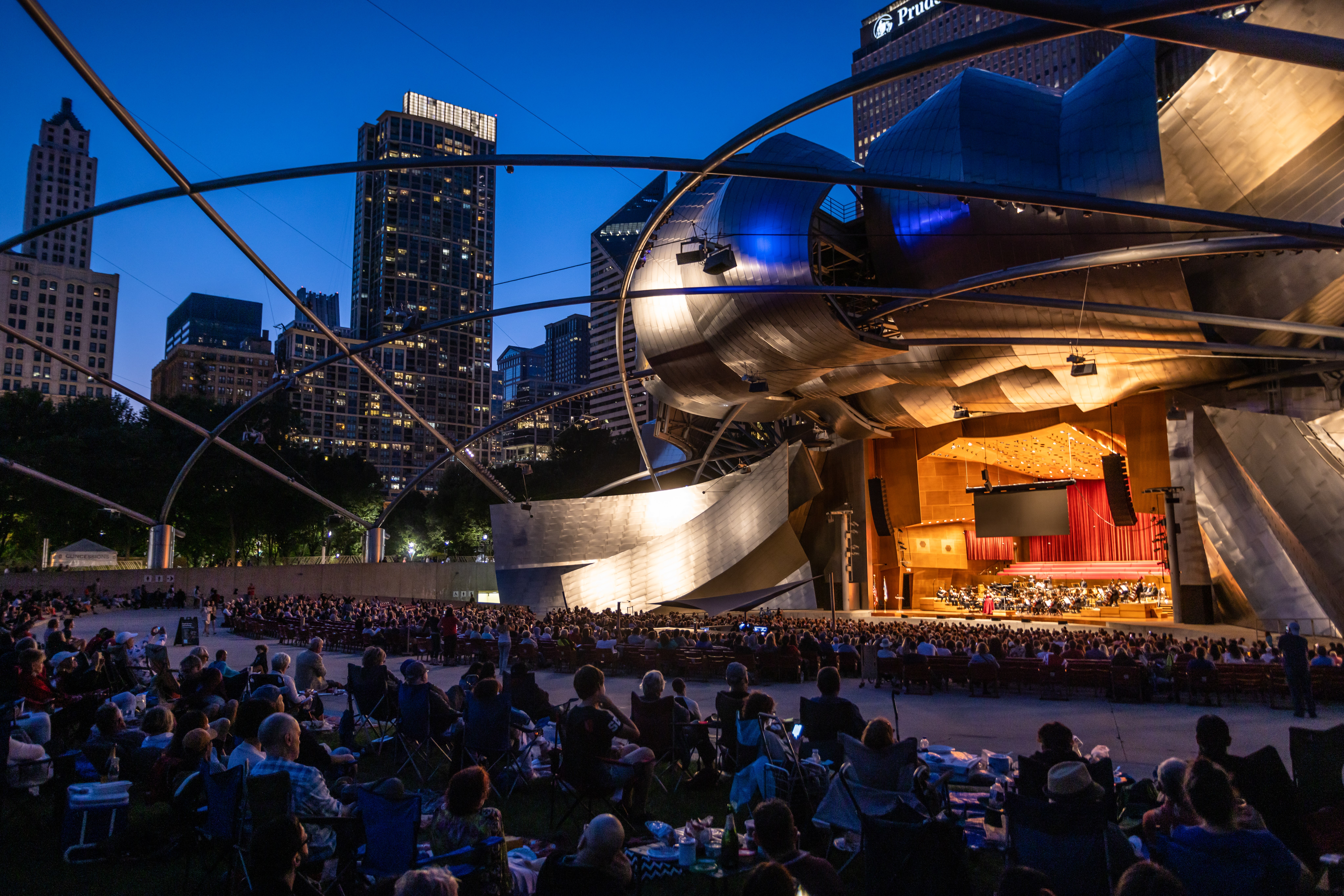Ticket sales matter, but these opera companies are measuring success with other essential metrics, too

Who doesn’t love a sold-out opera house? In a hall stuffed to its gills with enthusiastic attendees, the energy and excitement is palpable, lobby conversations crackle in intermissions, and the opera seems like the place to be. In addition to providing good ticket revenue, high turnout can energize donors, volunteers, and artists alike. It’s important to note, however, that ticket sales don’t tell the whole story. They’re just one metric for quantifying a “successful” show or season, and not necessarily even the most important metric at that.
In fact, says Lyric Opera of Chicago’s general director, president, and CEO, Anthony Freud, there are as many ways to quantify success as there are opera companies. “If you were to take a snapshot of Lyric Opera of Chicago 15 years ago and compare it with a snapshot of Lyric Opera today, the two snapshots are fundamentally different in terms of activity, in terms of how we communicate, how we think about ourselves, how we think about our art form, and our role as a performing arts organization in our city,” Freud explains.
So, in light of this constant self-reflection and evolution, how are today’s opera companies determining whether they’re hitting their marks? Ticket sales and economic impact will always be important figures, but many companies are quantifying how many new works they’re programming and paying more attention than ever to the types of stories they’re telling. In an OPERA America marketing benchmark report, companies defined “success” in numerous ways beyond revenue, from “earned the most press coverage” to “upheld our mission” to “community engagement” and more. Some companies are also placing a higher emphasis on their education efforts, especially as public schools continue to struggle to fund the arts programs that might introduce the next Aaron Copland or Florence Price to the art form. Others are tracking where attendees are coming from, how many new artists they’re able to recruit, and what sort of sustainable community partnerships they’re able to build, all with an eye toward increasing diversity among artists, administrators, and audiences.
The resultant combination of quantitative and qualitative data can build a more compelling narrative about a company and its role in its community than just one or the other alone. And while qualitative figures can be difficult to track precisely, it’s certainly not impossible. It just takes some outof- the-box thinking.

NEXT-GEN
In recent years, Houston’s Opera in the Heights (OH!) has been prioritizing bringing fresh voices to its stages and sees this endeavor as crucial to its overall success. While OH! doesn’t have an artist training program, Artistic Director Eiki Isomura says there is a critical need for a bridge between the education sphere and the country’s major professional stages. “We find that artists making debuts bring a certain hunger and fire to their performances that are especially inspiring,” Isomura says. This in turn can help drive energy and enthusiasm among attendees and donors, which can show up in the form of ticket revenue or donations down the line.
Balancing the company’s mission to debut new voices with its loyalty to artists it has previously engaged can be a tricky proposition, and Isomura says he’s all too aware that it can be tempting to fall back on pre-existing, comfortable relationships — a constant danger at companies of all sizes. Therefore, he gives himself a tangible goal in the form of a specific number of new artists he aims to hire each season. If the company engages 30 principal artists in a season, for example, “then we pledge to ourselves that every casting offer will constitute either a role debut or a company debut, or perhaps both,” he says. While the company might not always hit its goal number, building quantifiable goals into the artistic process makes success that much more likely, Isomura says. Now OH! is expanding the process to include “debuts” for composers, librettists, directors, and designers, as well.
In recent years, the Florentine Opera, based in Milwaukee, has focused specifically on getting an accurate snapshot of its education initiatives, which reach thousands of students a year. “We’re tracking what schools we go into, how many students were there, the gender of the students, the ZIP codes, their economic status,” says Renata Herrera, the company’s education and community engagement manager, adding that such details help the company ensure its programming is reaching a diverse swath of students. In February, the company schools. Around 46% of the students reached so far this season were students of color, and about 45% were economically disadvantaged. Tracking such details and sharing anecdotes from post-performance surveys has been a powerful tool in sharing company successes, Herrera says. Maggey Oplinger, the company’s general director and CEO, adds that she often shares anecdotes about these programs when she discusses the company publicly and that the company shares specific figures in its annual report and in board presentations. “We have made a commitment to representing Milwaukee on our staff and board, in our audience, and on our had reached students in 48 stage,” Oplinger says. “While we aren’t setting specific goals, we decided at the board level to use the city’s demographic statistics as a benchmark.”


SURVEYS, OF COURSE
Another Midwest company, Milwaukee Opera Theatre (MOT), has a goal of changing the lives of people interacting with the company. “That includes artists, audiences, and then the media sphere,” says Jill Anna Ponasik, Milwaukee Opera Theatre’s producing artistic director, explaining that MOT relies on multiple sources of feedback including audience surveys, critical reviews, and artist feedback to gauge whether they’re having the deep impact they’re hoping to. When Milwaukee Opera Theatre prepares a post-production or annual report, it includes not just box office numbers, but a series of testimonials from attendees and cast members. “For us, that’s about a hundred survey responses, which can be surprisingly rich in their application,” Ponasik says. “We might ask attendees which productions they have seen, to describe their experience in three words, and if they have a dream project they’d like us to know about.”
Surveys alone are anecdotal, but enough responses can suggest trends and rough data points. And when coupled with harder economic data, this information can become particularly compelling. Des Moines Metro Opera (DMMO) holds its summer opera festival in the suburb of Indianola, Iowa, performing four to five operas per season. One of the company’s strategic pillars is to develop programming that generates tourism, and the company keeps a close eye on how many attendees are from Iowa and how many are from outside the state. This is easily trackable — in 2022, about 20% of total attendees, more than 2,200 people, were from outside of Iowa, representing 40 states as well as Washington, D.C. “We look to provide a quantifiable record of the financial stimulus that visitors who, ‘but-for’ the opera, would not have attended an activity that was produced in our region,” says DMMO’s director of advancement, Tim McMillin, who adds that such figures are vital in making a case to funders for the company’s role in community vitality. “Those figure tells us that we’re continuing to attract people from outside our community, which is helpful in driving those economic factors like hotel and motel tax and restaurant purchases.”
DMMO is also completing its first economic impact study in 10 years (the study was delayed due to the pandemic) to better understand the company’s broader impact. Nationally, OPERA America tracks this figure in its Annual Field Report. According to the 2022 report, the opera sector’s primary expenditure was $570 million in the U.S. economy over the course of the year. This number is down by half compared to pre-pandemic times.


HARMONIC RESONANCE
Lyric Opera of Chicago has been placing a higher premium on stories that resonate with the broader Chicago community. “We’re constantly working to ensure that Lyric Opera of Chicago is indispensable in a range of different ways to our city,” says Freud. “How we are indispensable to our city will differ from year to year, from decade to decade.” In practice, that’s meant commissioning more new works that tackle contemporary issues like gun violence and climate change head-on. The ultimate goal is to increase the company’s community “relevance.”
How does one measure relevance? Freud says the company takes a holistic approach that weighs how the project was received and how much of an impact it had on audiences. The company also considers how much the project diversified audiences and whether it contributed to the company’s image in a positive way. “We intentionally don’t narrow that evaluation process down to figures, because that then tries to objectify what is ultimately subjective,” he adds. “But we try to be systematic and consistent in how we evaluate what we do.”
Ticket sales are important, but so is taking risks, he says. And in many cases those risks pay dividends; Freud notes that he’s seeing more sponsorship interest from funders in new projects than in opera’s inherited repertoire. Ultimately, Freud says, the challenge is to find and employ a consistent method of evaluation while also recognizing that the company’s values and goals will inevitably evolve over time. And MOT’s Ponasik agrees: “These things are harder to quantify than dollars, and numbers of people are much easier to measure. But, if you pay attention, you can measure things like enthusiasm, interest, and curiosity. It’s just a little more intangible.”
This article was published in the Spring 2023 issue of Opera America Magazine.

Marianne Combs
Marianne Combs has reported on arts and culture in Minnesota for more than 20 years.






